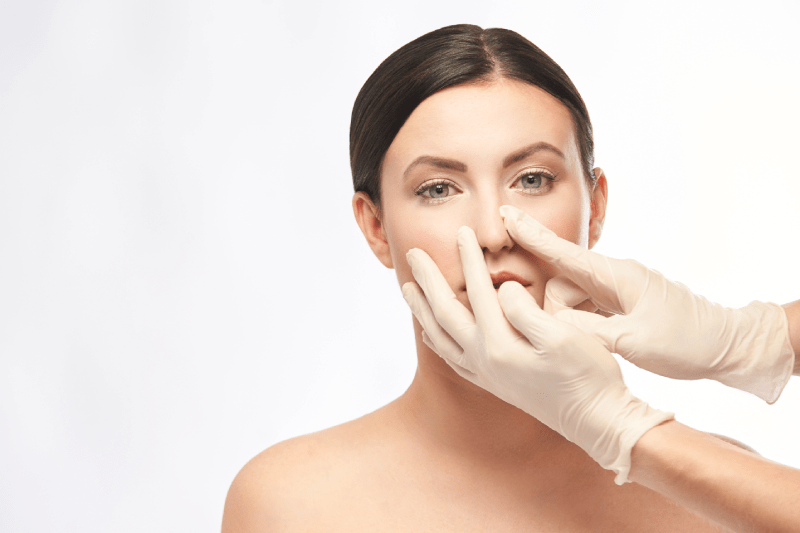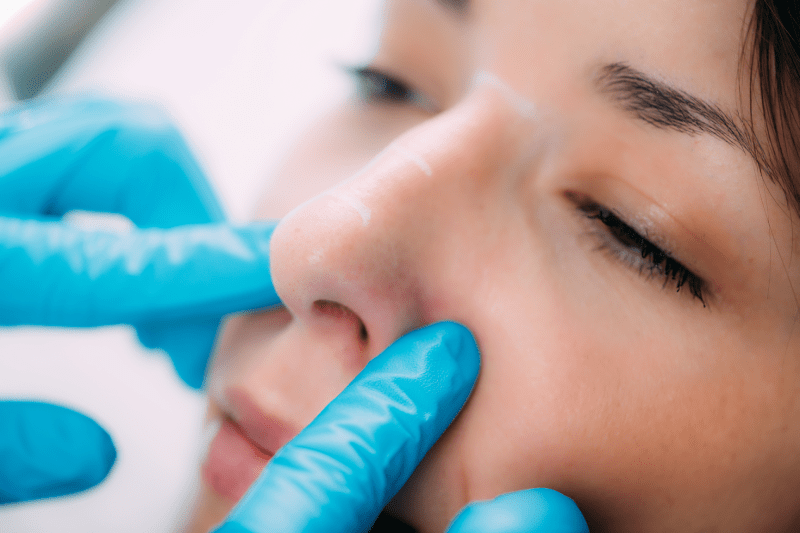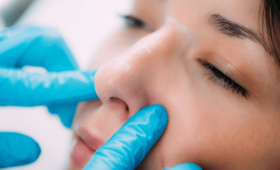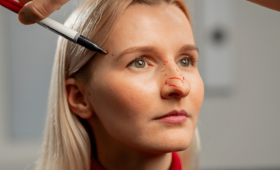What is the average cost of a rhinoplasty surgery in the Netherlands?
The cost of a rhinoplasty surgery in the Netherlands varies widely depending on the scope of the operation and the surgeon’s experience. On average, prices can range from €3,500 to €7,500. These prices cover not only the surgical procedure but also anesthesia, hospital stay (if necessary), and post-operative check-ups.
The most important reasons for the price difference are the surgeon’s level of expertise, the location and reputation of the clinic, and the complexity of the surgery. The country’s general cost of living and high healthcare standards are effective in the formation of this price range.
What services are included in the price?
In the Netherlands, rhinoplasty surgery prices are generally offered as an all-inclusive package. These packages cover the surgeon’s fee, operating room costs, the anesthesiologist’s fee, and the first few post-operative check-up appointments. In addition, all consumables used during the surgery and supportive equipment such as a splint or cast are also included in the price.
However, additional medications like post-operative painkillers or vitamin supplements may be outside the package. Therefore, it is important to contact your clinic before the surgery to find out in detail what is included and what is not.
What are the most important factors affecting the price?
The most important factors affecting the price of rhinoplasty are the surgeon’s experience and expertise, the location and reputation of the clinic where the surgery will be performed, and the complexity of the surgery.
An experienced and well-known surgeon may charge a higher fee than a less experienced one. In addition, the costs of clinics in big cities (Amsterdam, Rotterdam) are generally higher compared to those in smaller cities. Additional procedures like facial contouring or revision surgery if a previous surgery was unsuccessful can significantly increase the price.
Does insurance cover rhinoplasty surgery in the Netherlands?
Rhinoplasty surgery in the Netherlands is generally not covered by health insurance as it is considered an aesthetic procedure. Insurance companies exclude cosmetic surgeries from their coverage. However, if the rhinoplasty is performed due to a medical problem, for example, if you have breathing problems due to a deviated septum, part or all of the surgery may be covered by insurance. In this case, you should consult an ENT specialist beforehand and contact your insurance company to clarify the situation.
How can I find a good rhinoplasty surgeon in the Netherlands?
You can follow several ways to find a good rhinoplasty surgeon in the Netherlands. First, you can check whether the surgeon is a member of official organizations such as the Dutch Association for Plastic Surgery (NVCG). These memberships show that the surgeon meets certain training and ethical standards. You can also read patient reviews on online platforms and examine before and after photos on the clinic’s website. A reliable surgeon will realistically evaluate your expectations and inform you about all the risks.
How does the pre-operative consultation process work?
The pre-operative consultation is one of the most critical stages of the rhinoplasty process. During this meeting, the surgeon evaluates the patient’s expectations, medical history, and nose structure in detail. To achieve a natural-looking result that is proportionate to the other features of the face, the surgeon can use digital imaging technology to show the patient their possible post-operative appearance. This meeting is a perfect opportunity for the patient to ask all their questions about the surgery and increase their trust in the surgeon.
How long does the surgery take?
The duration of rhinoplasty surgery varies according to the complexity of the operation. On average, primary rhinoplasty surgeries can take between 1.5 and 3 hours. If the surgery is a more complex case or a revision surgery, this time may be even longer. The surgeon’s technique, the extent of the changes to be made to the nose, and the speed of the anesthesiologist are factors that directly affect the duration of the surgery.
How long does the post-operative recovery process take?
The post-operative recovery process is felt significantly in the first few weeks, but full recovery can take up to a year. In the first 1-2 weeks, swelling and bruising are at their highest level, and a cast or splint is worn on the nose. After the splint is removed, the swelling gradually decreases. Most of the recovery occurs within the first 3-6 months, but it may take 12-18 months for the small swelling at the tip of the nose and on the nasal bone to completely subside. It is very important to be patient and follow the doctor’s instructions during this process.

What is the level of pain after the surgery?
The level of pain after rhinoplasty surgery is generally less than expected and at a manageable level. The pain felt immediately after the surgery can be easily controlled with painkillers prescribed by the doctor. Most patients report not experiencing significant pain other than a slight discomfort and fullness in the first 24-48 hours after the surgery. Bruising and swelling are much more uncomfortable than pain.
When do bruising and swelling go away?
Bruising and swelling after rhinoplasty are a natural part of the recovery process. Bruises under the eyes and around the nose usually disappear within the first 1-2 weeks. The swelling, on the other hand, gradually decreases. In the first month after the surgery, most of the swelling subsides. However, the fine swelling at the tip of the nose and on the bridge can last longer. It takes between 6 months and 1 year to completely subside. Applying a cold compress and keeping the head elevated during this process helps to reduce the swelling.
When can I return to work?
The time to return to work depends on the type of job you do and your personal recovery speed. If you work in a desk job, you can return to work 1 to 2 weeks after the surgery. If you work in a physically demanding job that involves heavy lifting, this period can be extended to 4 to 6 weeks. It is normal to feel tired and be distracted by swelling in the first few weeks, so it is best to talk to your doctor to determine the most suitable time.
When can I start exercising after the surgery?
It is important to start exercising gradually and with your doctor’s approval after the surgery. Light activities like walking can be done for the first 2-3 weeks. After 4-6 weeks, cardio exercises and weight lifting can be slowly started. It is vital to avoid sports that carry the risk of getting hit in the nose area (basketball, football, etc.) for at least 6 months after the rhinoplasty operation.
Will there be a scar after the surgery?
The possibility of scarring after rhinoplasty surgery varies according to the surgical technique used. In the “closed rhinoplasty” technique, since the incisions are made inside the nostrils, there is no visible scar on the outside. In the “open rhinoplasty” technique, a small incision is made in the area called the columella that separates the nostrils. This incision is very small and fades over time, becoming almost invisible. A good surgeon works meticulously to minimize scarring.
What are the advantages and disadvantages of getting surgery abroad instead of in the Netherlands?
The biggest advantage of getting surgery abroad instead of in the Netherlands is cost savings. In countries like Turkey, services of the same quality can be offered at more affordable prices. However, there are also disadvantages. The stress of traveling abroad, the language barrier, the need to travel again for post-operative follow-up appointments, and the difficulty of reaching your surgeon in an emergency are among these disadvantages. Therefore, all these factors should be carefully evaluated before making a decision.
Are the results of rhinoplasty surgery permanent?
The results of rhinoplasty surgery are permanent when done correctly and well cared for by the patient. The surgeon reshapes the cartilage and bone structure in the nasal skeleton. These changes are permanent. However, the aging process, environmental factors, or blows to the nose can cause small changes in the shape of the nose. To preserve the final result of the surgery, it is important to avoid nasal trauma and maintain a healthy lifestyle.
Is revision rhinoplasty more expensive?
Yes, revision rhinoplasty surgery is generally more expensive than the first surgery. The main reason for this is that revision surgeries are more complex. The scar tissue and changes in the cartilage structure that occur after the first surgery make the surgeon’s job more difficult. Revision surgery requires more time and special surgical skills. Therefore, it is vital to choose a more experienced and specialized surgeon in this area for revision surgery.
What surgical techniques are used?
Two main surgical techniques are used in rhinoplasty: open rhinoplasty and closed rhinoplasty. In open rhinoplasty, a small incision is made in the columella area that separates the nostrils. This technique allows the surgeon to see the nasal structure more clearly. In closed rhinoplasty, all incisions are made inside the nostrils, and there is no visible scar on the outside. Both techniques are suitable for different situations, and the decision on which technique to use is made with your surgeon’s advice.



